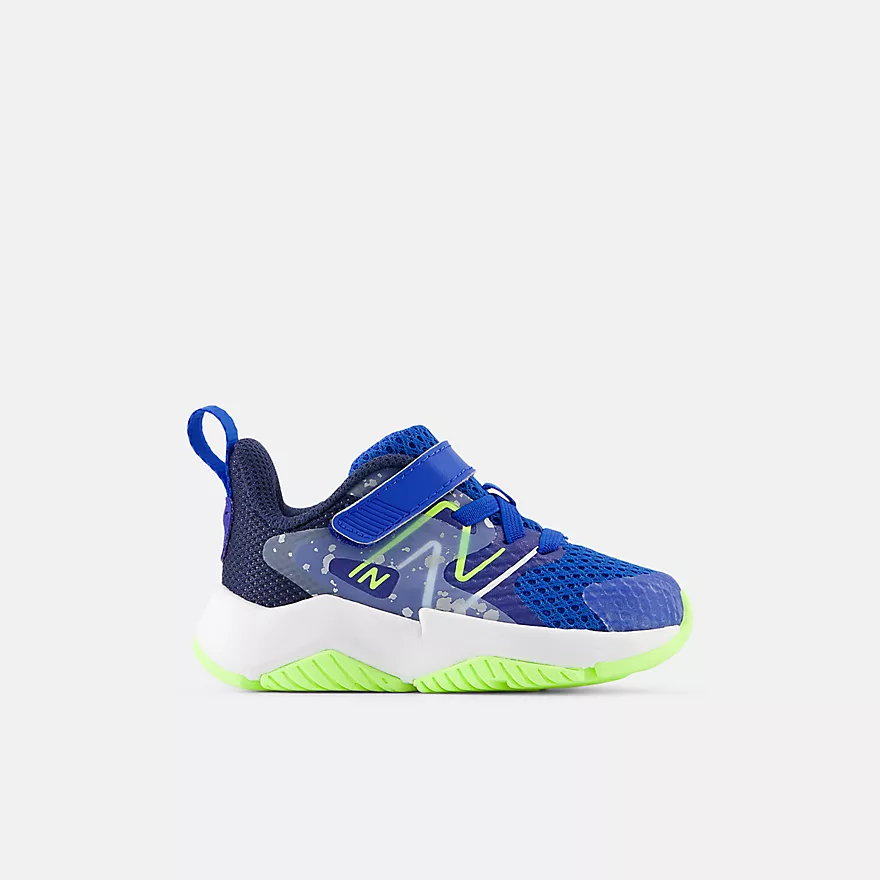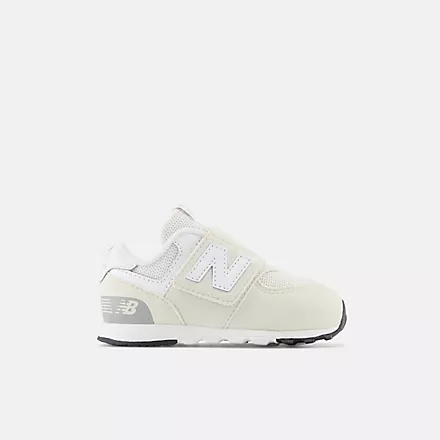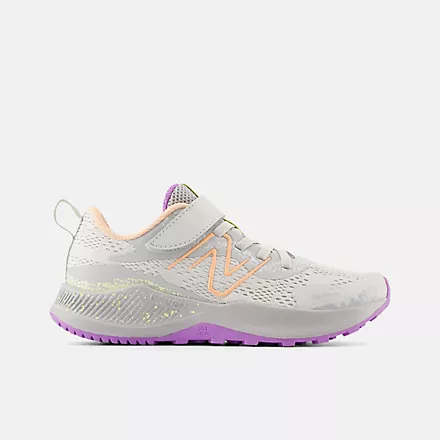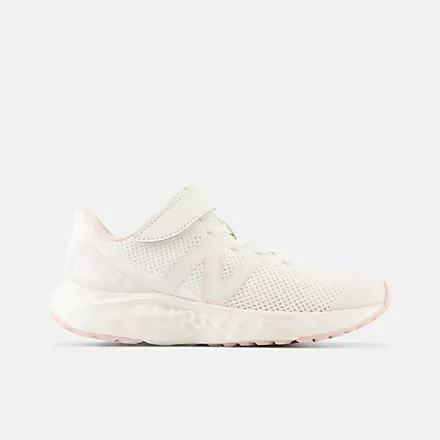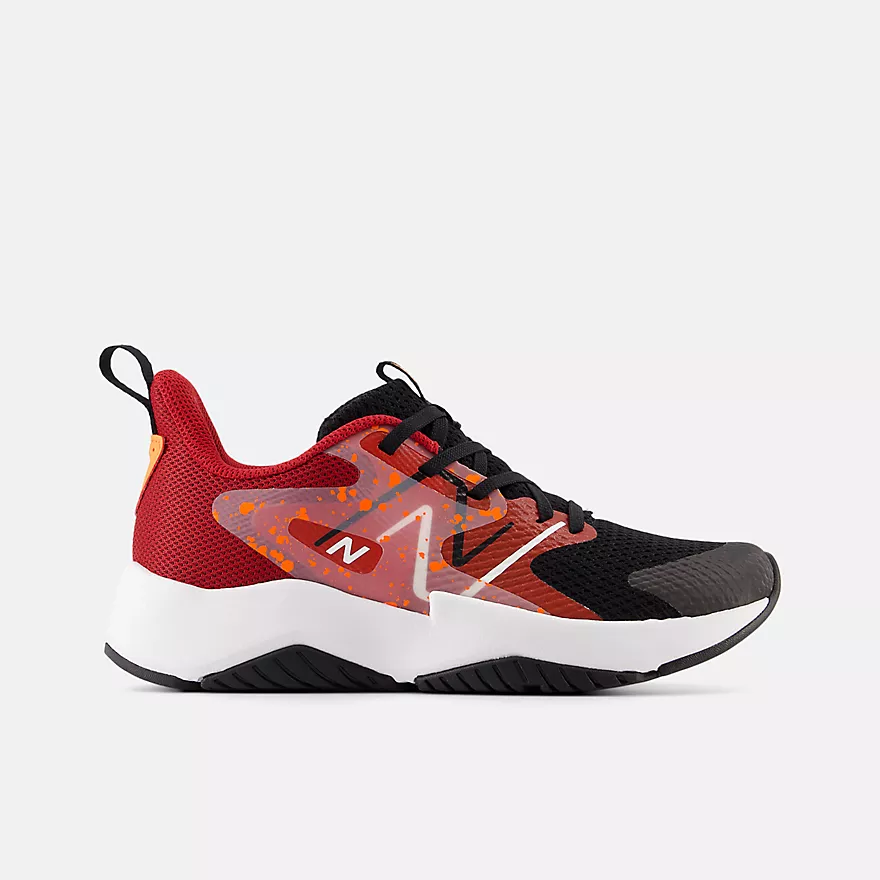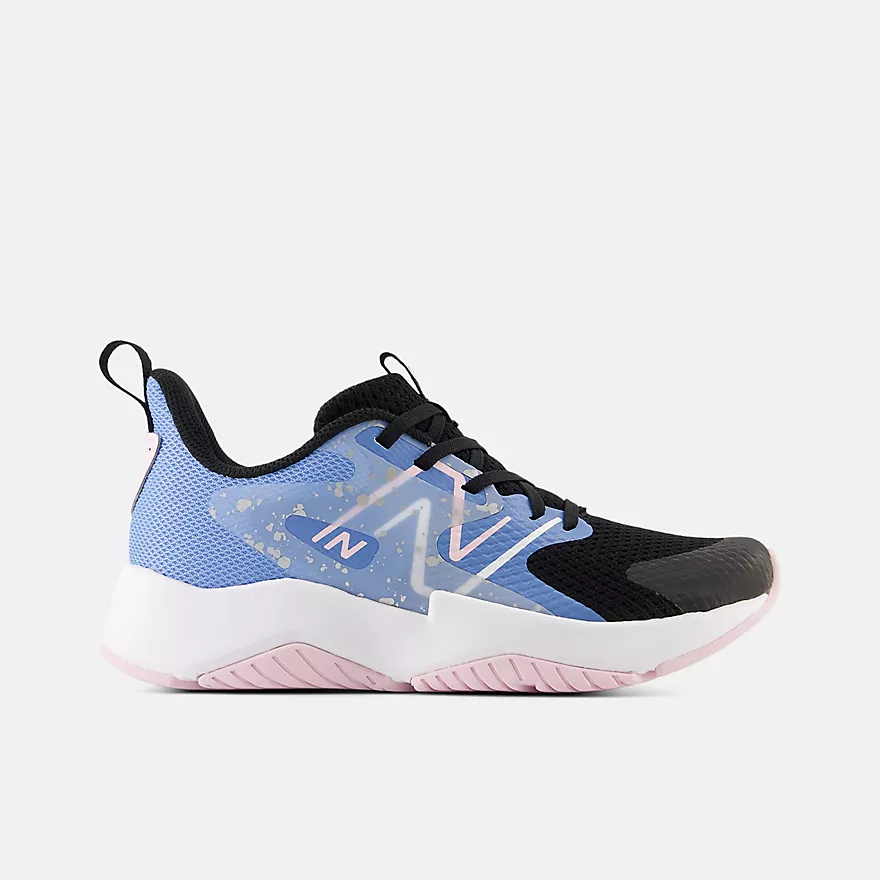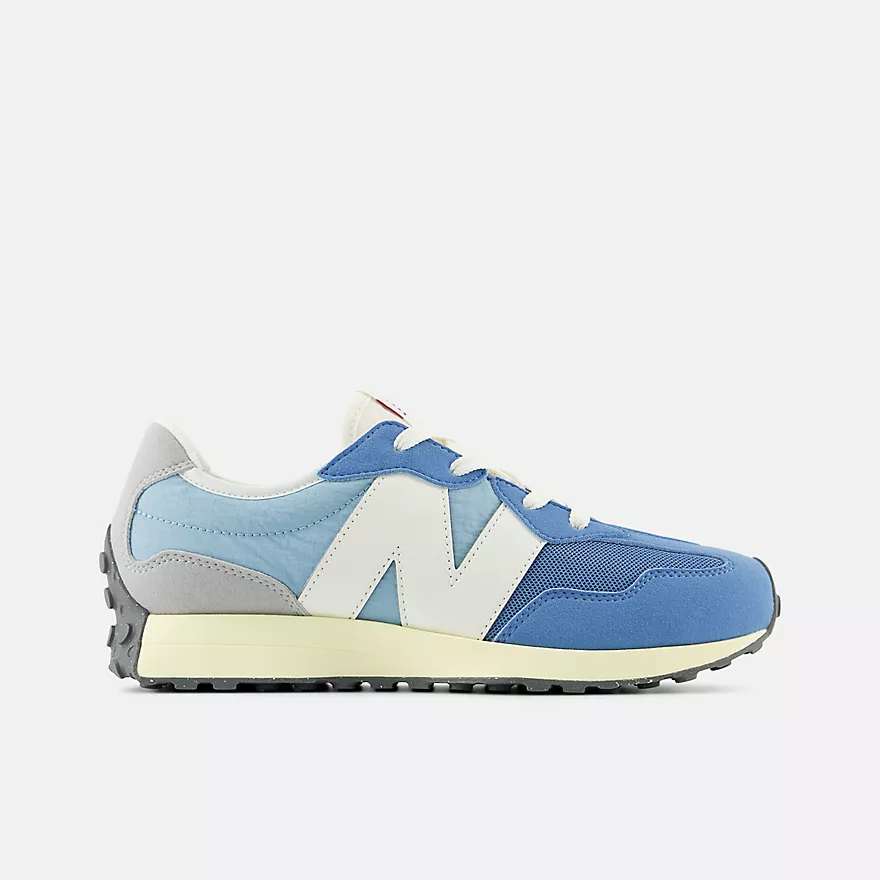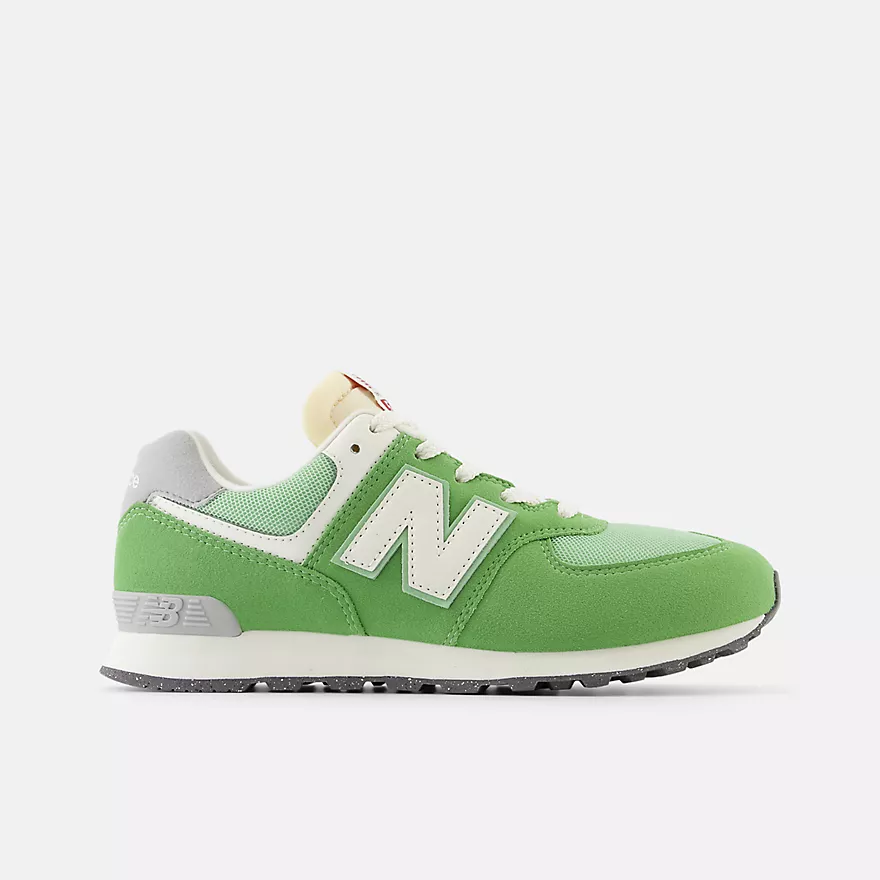Kids’ Ingrown Toenail Treatment – Choose the Correct Pair of Shoes for Your Child!

Do you have a child that is dealing with an ingrown toenail? Did you know that ingrown toenails are one of the most common reasons why children have to visit a podiatrist? An ingrown toenail affects the big toe most often, but it can happen to any toe. Wearing shoes that are too narrow is the main cause of why children develop ingrown toenails. As your children get older, they might develop toenail problems, and basic toenail care can become more difficult.
If your child developed an ingrown toenail, you must provide your child with shoes that provide these 2 key features:
1️⃣ Rounder Toe-Boxes: This feature helps prevent your kids’ toes from overlapping or rubbing against one another or the side of the shoes. Let me show you the difference between one of the shoes I recommend with a round toe-box versus a different shoe:

2️⃣ Extra Depth: This feature helps prevent your kids’ toenails from rubbing against the top front part of the shoes.
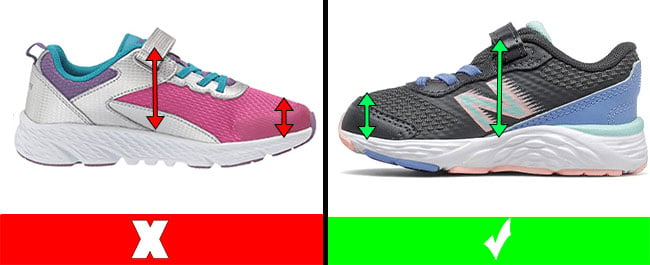
The issue is that parents don’t know where and how to find shoes that provide those 2 features, as shoes don’t come labeled as “extra deep” or with a “rounder toe-box”. The good news is that I will help you find them.
Your children’s toenails offer a measure of protection for the end and top of the toes, but shoes offer your children’s toes far greater protection than even the healthiest toenails.
If you don’t provide your children with the correct pair of shoes you will end up creating several foot issues to their feet such as blisters, calluses, corns, and ingrown toenails.
The good news is that ingrown toenails can be prevented – as long as it’s not a hereditary factor that affects the shape of the nail by providing your child with shoes that provide rounder toe-boxes, extra depth and also the correct size. Getting the correct shoe size means providing your child with the correct shoe length and the correct shoe width.
Please make sure to never cut your children’s toenails too short. This is also one of the most common mistakes parents make that leads to toenails becoming ingrown.
Before I provide you with a selection of the best children’s shoes that come with round toe-boxes and extra depth, I want to make sure that you know your child’s exact foot size. You won’t be able to order the correct shoe size online if you don’t know your child’s foot size to begin with.
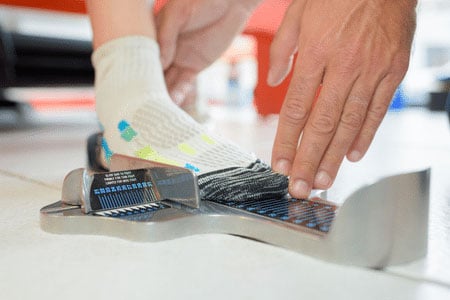
I always recommend parents take their children to their local fitting children’s shoe store that they trust, the issue is that most fitting stores have been closing down and parents need to end up buying their kids’ shoes online. There is nothing wrong with this, but you must know your child’s exact foot size to know what size to order.
How to Retrieve Your Child’s Exact Foot Length and Shape
I created a resource that describes the simplest, yet most effective way to figure out your child’s shoe size from home. In that article I help parents determine their child’s exact foot size and whether the child has narrow, medium, wide, or extra wide feet. I also will be able to tell you whether your child has a high instep or not.
I only write reviews of shoes that I have fitted before, otherwise, I wouldn’t know how well-made they are, the amount of support that they provide, and how they fit.
Without further ado, let’s take a look at the best kids’ ingrown toenail treatment: Deep shoes with rounder toe-boxes! Disclosure: Some links in this post may be affiliate links and we may receive a small commission (at no extra cost to you) when you click our links and make purchases.
The Best Kids’ Shoes for Ingrown Toenails
Below you can find a selection of the best kids’ shoes for ingrown toenails. These shoes are available in medium (M), wide (W), and extra wide (XW).
Toddler Shoe Sizes (0 to 10)
- Shoe style RaveRun by New Balance
- Available in medium, wide and extra wide widths
- Oversized opening for easy on and off
- Lightweight injection-molded EVA foam midsole provides lightweight cushioning
- Hook and loop closure
- Order this shoe a whole size larger than your toddler’s current foot size
- Shoe style RaveRun by New Balance
- Available in medium, wide and extra wide widths
- Oversized opening for easy on and off
- Lightweight injection-molded EVA foam midsole provides lightweight cushioning
- Hook and loop closure
- Order this shoe a whole size larger than your toddler’s current foot size
- Shoe style Original Jazz Lite 2.0 by Saucony
- Available in medium and wide widths
- Velcro closure
- Leather and mesh upper for durability and breathability
- APMA Certified
- Traction pods on the outsole for serious grip
- EVA midsole for lightweight feel
- Order this shoe a whole size larger than your toddler’s current foot size
- Shoe style Ride 10 Jr by Saucony
- Available in medium, wide, and extra wide widths
- Velcro closure
- Leather and mesh upper
- Non-marking traction pods to help improve stability
- APMA approved
- Toe cap for extra durability
- Order this shoe a whole size larger than your toddler’s current foot size
- Shoe style 2510 by Tsukihoshi
- Fits medium and wide feet (fits high insteps)
- Velcro closure
- Removable insoles
- Lightweight and flexible
- Extra wide toe box allows natural splaying of toes for better balance, comfort, and foot health
- Long heel counter provides stability
- Machine washable
- Order this shoe the same size as your toddler’s current foot size (shoe fits long)
- Shoe style 2510 by Tsukihoshi
- Fits medium and wide feet (fits high insteps)
- Velcro closure
- Heel stabilizer provides lateral stability
- Removable insoles
- The insoles are Infused with natural Green Tea extract (no chemicals)
- Machine washable
- Order this shoe the same size as your toddler’s current foot size (shoe fits long)
- New Balance shoe style Fresh Foam 650
- Fits children with medium, wide, or extra wide feet
- Velcro closure
- Leather and mesh upper
- Mesh collar and tongue are padded with foam for a great fit and added comfort
- Extra deep
- Order this shoe a whole size larger than your toddler’s current foot size
- Shoe style 574 by New Balance
- Available in medium, wide, and extra wide widths (fits high insteps)
- Velcro closure
- Oversized opening for easy on and off
- Fresh Foam midsole cushioning is precision engineered to deliver an ultra-cushioned, lightweight ride
- Order this shoe a whole size larger than your toddler’s current foot size
- Shoe style Fresh Foam by New Balance
- Available in medium, wide and extra wide widths
- Oversized opening for easy on and off
- Lightweight injection-molded EVA foam midsole provides lightweight cushioning
- Hook and loop closure
- Order this shoe a whole size larger than your toddler’s current foot size
- Shoe style Sr Thompson by Stride Rite
- Available in medium and wide widths (fits high insteps)
- Velcro closure
- Ortholite memory foam footbeds
- Opens super wide which makes in and out easy
- Recycled material linings to help reduce odor
- Order this shoe half a size larger than your toddler’s current foot size
- Shoe style SRT Winslow by Stride Rite
- Available in medium and wide widths (fits high insteps)
- Velcro closure
- Toe cap reinforcement and bumptoe protection against stumbles
- Opens super wide which makes in and out easy
- Step-stabilizing design with comfy Ortholite memory foam footbeds
- Order this shoe half a size larger than your toddler’s current foot size
- Shoe style Fresh 574 by New Balance
- Available in medium, wide and extra wide widths
- Oversized opening for easy on and off
- No-sew overlays
- Order this shoe a whole size larger than your toddler’s current foot size
- See Kai Run shoe style Robyne
- Fits children with medium, wide, or extra wide feet
- Breathable textile lining and cushioned insole
- Double velcro straps for easy on and off adjustability
- Padded tongue and collar for added comfort
- Order this shoe a half size larger than your toddler’s current foot size
- See Kai Run shoe style Robyne
- Fits children with medium, wide, or extra wide feet
- Canvas upper
- Toe cap is durable for early steps
- Double velcro straps
- Oversized opening for easy on and off
- APMA approved
- Order this shoe half a size larger than your toddler’s current foot size
- Shoe style 574 New-b V1 by New Balance
- Available in medium, wide, and extra wide widths (fits high insteps)
- Velcro closure
- Generous toe box and instep to accommodate and support a first-walker’s needs
- Mesh and suede upper for durability and comfort
- Extra deep
- Order this shoe a whole size larger than your toddler’s current foot size
- Shoe style 574 New-b V1 by New Balance
- Available in medium, wide, and extra wide widths (fits high insteps)
- Velcro closure
- Generous toe box and instep to accommodate and support a first-walker’s needs
- Mesh and suede upper for durability and comfort
- Extra deep
- Order this shoe a whole size larger than your toddler’s current foot size
Little and Big Kid Sizes (10.5 to 7)
- Shoe style RaveRun by New Balance
- Available in medium, wide, and extra wide widths
- Velcro closure
- Synthetic and engineered mesh upper
- Stitched-on toe cap for extra durability
- Order this shoe a half size larger than your child’s current foot size
- Shoe style Nitrel v5 by New Balance
- Available in medium and wide widths
- Velcro closure
- Synthetic and engineered mesh upper
- Stitched-on toe cap for extra durability
- Order this shoe a half size larger than your child’s current foot size
- Shoe style Russell by See Kai Run
- Fits medium, wide, and extra wide feet (fits high insteps)
- Double velcro straps
- Removable, contoured, leather-lined footbed for breathability and comfort
- Lightweight and flexible
- Order this shoe a half size larger than your child’s current foot size
- Shoe style Robyn by See Kai Run
- Fits medium, wide, and extra wide feet (fits high insteps)
- Double velcro straps
- Removable, contoured, leather-lined footbed for breathability and comfort
- Lightweight and flexible
- Order this shoe a half size larger than your child’s current foot size
- Shoe style Velocity by Tsukihoshi
- Fits medium and wide feet (fits high insteps)
- Velcro closure
- Heel stabilizer provides stability
- Removable insoles
- The insoles are Infused with natural Green Tea extract (no chemicals)
- Machine washable
- Order this shoe the same size as your child’s current foot size (shoe fits long)
- Shoe style 3584 Rainbow by Tsukihoshi
- Fits medium and wide feet (fits high insteps)
- Velcro closure
- Removable insoles
- The insoles are Infused with natural Green Tea extract (no chemicals)
- Machine washable
- Order this shoe the same size as your child’s current foot size (shoe fits long)
- Shoe style Fresh Foam 650 Bungee by New Balance
- Available in medium, wide, and extra wide widths (fits high insteps)
- Velcro closure
- Mesh collar and tongue are padded with foam for a comfortable fit
- Fresh Foam midsole cushioning is precision engineered to deliver an ultra-cushioned, lightweight ride
- Order this shoe a whole size larger than your child’s current foot size
- Shoe style Fresh Foam Arishi v4 by New Balance
- Available in medium, wide, and extra wide widths (fits high insteps)
- Velcro closure
- Synthetic and engineered mesh upper
- Durable rubber outsole designed to withstand wear-and-tear
- Order this shoe a half size larger than your child’s current foot size
- Shoe style Arishi v4 by New Balance
- Available in medium, wide, and extra wide widths (fits high insteps)
- Velcro closure
- Mesh collar and tongue are padded with foam for a comfortable fit
- Fresh Foam midsole cushioning is precision engineered to deliver an ultra-cushioned, lightweight ride
- Order this shoe a whole size larger than your child’s current foot size
- The New Balance shoe style RaveRun is available for little and big kids
- Fits children with medium, wide, or extra wide feet
- Available in laces
- No-sew overlays for a sleek fit and feel
- Mesh collar and tongue are padded with foam for a great fit and added comfort
- Order this shoe half a size larger than your child’s current foot size
- The New Balance shoe style RaveRun is available for little and big kids
- Fits children with medium, wide, or extra wide feet
- Available in laces
- Leather and mesh upper
- No-sew overlays for a sleek fit and feel
- Order this shoe half a size larger than your child’s current foot size
- Shoe style Axon by Saucony
- Available in medium and wide widths
- EVA midsole provides increased shock attenuation, responsive cushioning and lasting durability
- Cushioned footbed
- Order this shoe a whole size larger than your child’s current foot size
- Shoe style Axon by Saucony
- Available in medium and wide widths
- EVA midsole provides increased shock attenuation, responsive cushioning and lasting durability
- Padded tongue and collar
- Cushioned footbed
- Order this shoe a whole size larger than your child’s current foot size
- New Balance shoe style Fresh Foam 880v12
- Fits children with medium, wide, or extra wide feet
- Lace-up closure
- Dual-layer midsole construction featuring top-bed foam cushioning and underfoot Fresh Foam X
- Order this shoe half a size larger than your child’s current foot size
- Shoe style 480 V1 by New Balance
- Available in medium and wide widths
- Lace-up closure
- Lightweight EVA midsole
- Leather and mesh upper for durability & breathability
- Order this shoe a whole size larger than your child’s current foot size
- Shoe style 327 by New Balance
- Available in medium and wide widths
- Lace-up closure
- FuelCell foam delivers a propulsive feel to help drive you forward
- Order this shoe a whole size larger than your child’s current foot size
- New Balance shoe style FuelCell Propel v5
- Fits children with medium, wide, or extra wide feet
- Dual-layer midsole construction featuring top-bed foam cushioning and underfoot Fresh Foam X
- Order this shoe a whole size larger than your child’s current foot size
- Shoe style 574 by New Balance
- Available in medium and wide widths
- Lace-up closure
- ENCAP midsole cushioning provides good arch and heel support
- Leather and suede upper
- Order this shoe half a size larger than your child’s current foot size
- New Balance shoe style Fresh Foam Arishi v4
- Fits children with medium, wide, or extra wide feet
- Lace-up closure
- Mesh upper is lightweight and breathable
- Lightweight EVA foam cushioning in the midsole and padded heel increases comfort
- Firm heel counter
- Supportive heel for active kids
- Order this shoe a half size larger than your child’s current foot size
Why Does Your Child Have an Ingrown Toenail? – Let’s Find Out!
Ingrown toenails can develop for several reasons, including hereditary factors that affect the shape of the nail, trauma to the toes from stub injuries or dropped objects, and poor trimming techniques. However, the most common cause children develop ingrown toenails is from wearing shoes that are not the correct size–too short or too narrow.
It’s important to understand how you should cut your children’s toenails. Trimming the nail too short or rounding the corners of the nail edge allows the skin to lift above the nail border and impede the forward growth of the nail plate.

Why do shoes play a key role in keeping your children’s toenails healthy?
Repetitive pressure on the tips or sides of the toe can cause an ingrown toenail, this is the reason why you must avoid shoes and socks that place pressure on the nail border.
Certain types of socks are seamless, which allow your child’s toes to freely move and prevent them from overlapping and rubbing against each other.
Socks do more than just act as a barrier between your kids’ feet and the shoes since they also prevent the formation and build-up of bacteria inside the shoes.
The Best Socks for Ingrown Toenails – Seamless and Breathable!
If your child has an ingrown toenail, I always recommend providing them with socks that are seamless as they help prevent the toes from rubbing against each other and will allow you’re your child to freely move the toes.
While I can’t get into too much detail in this article about which are the best seamless socks for children, there is another article I wrote where you will see a selection of the best seamless socks that I fitted before.
Steps to Take If Your Child Developed an Ingrown Toenail
Self-treatment, including warm water soaks and topical antibiotic ointments, should relieve the pain within two to three days.
Soaking the sore toe in warm water for 15 minutes 2 to 3 times each day will reduce the swelling.
Make sure your child is wearing shoes that have a rounder toe-box, so they won’t press on the toenail. Have your child walk around in sandals or go barefoot as much as possible around the house to prevent pressure on the ingrown toenail until it fully heals.
If you notice any signs of infection such as redness, odor, streaking, swelling, increased pain, or bleeding, then abandon self-treatment and see a podiatrist.

It’s important that if your child has developed an ingrown toenail that you prevent the nail from rubbing against the side of the shoe by providing your child with a pair of shoes that are deep and come with a round toe-box.
Please get rid of any pointed or tight shoes that might put pressure on your child’s toenail. After the cuticle has healed, cut the toenails straight across, leaving the corners visible.
Are Any Other Shoe Choices Available?
Make sure that you provide your child with the correct type of shoes and socks, since an ingrown toenail can cause a lot of pain, especially in children. Do not hesitate to contact me if you can’t seem to find a particular shoe style for your child, I have highly likely fitted it before and I will help you find it: [email protected]
Have you found a particular shoe style that has been effective in treating and preventing ingrown toenails? Please share your findings below so other parents can benefit from your experiences.

